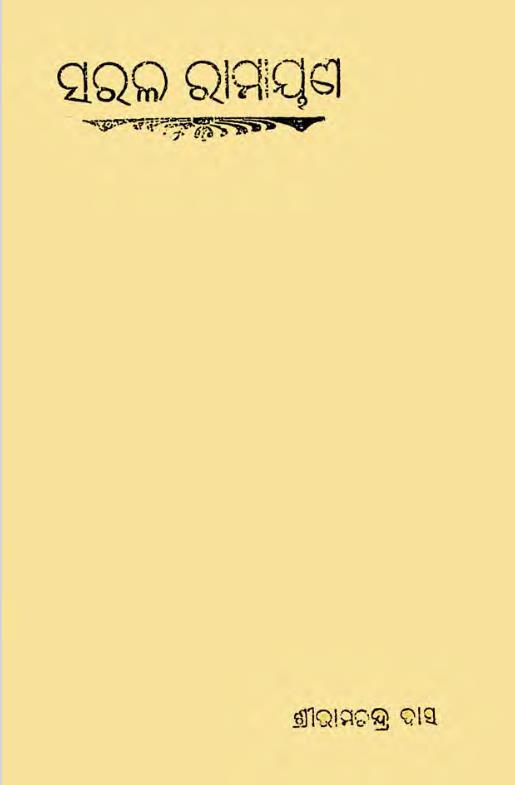In the realm of Indian literature, the epic of Ramayana holds a place of deep reverence and cultural significance. Among the numerous interpretations and adaptations of this ancient narrative, Saral Ramayan by Ramachandra Das, published in 1931, stands out for its remarkable accessibility and poetic beauty. This work has not only preserved the essence of the original text but has also made it relatable to a modern audience through its simple language and engaging style.
Ramachandra Das, a poet and writer, approached the Ramayana with a fresh perspective, aiming to make the profound lessons embedded in the epic accessible to all. He recognized that the intricate verses of the original Sanskrit, while rich in meaning, could often alienate readers unfamiliar with classical literature. To bridge this gap, Das employed a straightforward yet evocative style in Saral Ramayan, enabling readers to connect with the narrative on a personal level.
The poem beautifully captures the key events of the Ramayana, from Rama’s exile to his triumphant return to Ayodhya. It presents the tales of devotion, duty, valor, and righteousness in a manner that resonates with both young and old. Das’s use of simple Hindi not only honors the tradition of storytelling but also ensures that the moral lessons of the text remain clear and poignant. The themes of love, sacrifice, and the eternal struggle between good and evil are articulated with grace and clarity, making the epic relevant to contemporary readers.
One of the notable aspects of Saral Ramayan is its lyrical quality. The rhythm and meter of the verses enhance the reading experience, transforming the act of reading into a melodious journey. This musicality is vital in Indian poetry, where the sound of the words often carries as much meaning as the content itself. Das’s work, thus, invites readers to not only absorb the narrative but also to experience it emotionally, creating a lasting impact.
Moral teachings embedded within the Ramayana are timeless, and Das’s interpretation shines a light on these values. He emphasizes the importance of dharma (righteousness), the bond between Rama and Sita as the epitome of marital devotion, and the depth of friendship and loyalty shown by characters like Hanuman and Lakshmana. By using relatable language, Das ensures that such teachings resonate with readers facing modern dilemmas, illustrating that the wisdom of age-old texts is still applicable in today’s world.
Furthermore, Saral Ramayan serves as an invaluable resource for educators and parents seeking to introduce children to the epic’s core messages. Its simplicity allows for engaging discussions about ethics, morality, and character development, fostering a sense of cultural continuity. This makes Ramachandra Das’s work not merely a literary piece but a tool for imparting age-old wisdom to future generations.
In celebration of the literary journey through Saral Ramayan, it is essential to acknowledge the role of poets like Ramachandra Das in preserving our ancient traditions while making them relevant. The 1931 publication of this work marked a significant contribution to Indian literature, bridging divides across generations and encouraging a deeper understanding of our cultural heritage. Through his poetic interpretations, Das invites us to reflect on the values that bind us as a society, ensuring that the teachings of the Ramayana continue to inspire and guide us.
Books Info
| Books name | Saral Ramayan / ସରଳ ରାମାୟଣ |
| Author | Ramachandra Das |
| No Of pages | 60 |
| Publisher | Sri Ramachandra Das |
| Publication | 1931 |
| Printed At | Sri Syamasundara Padhy |
| Distributor | NA |

